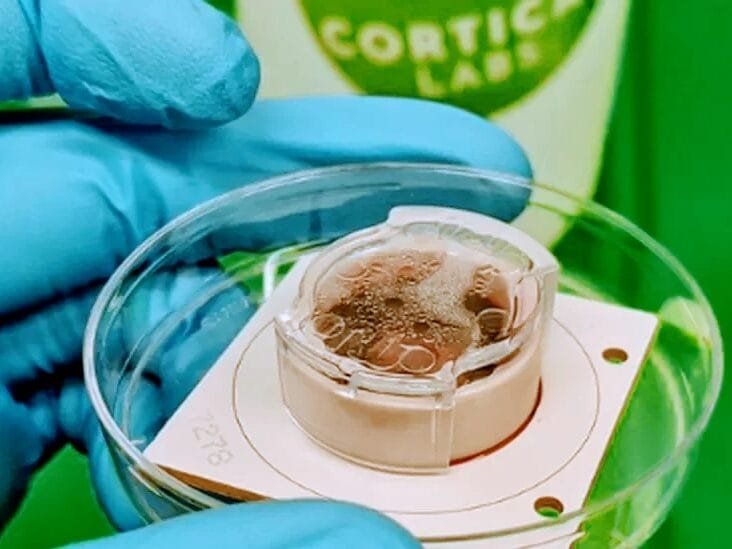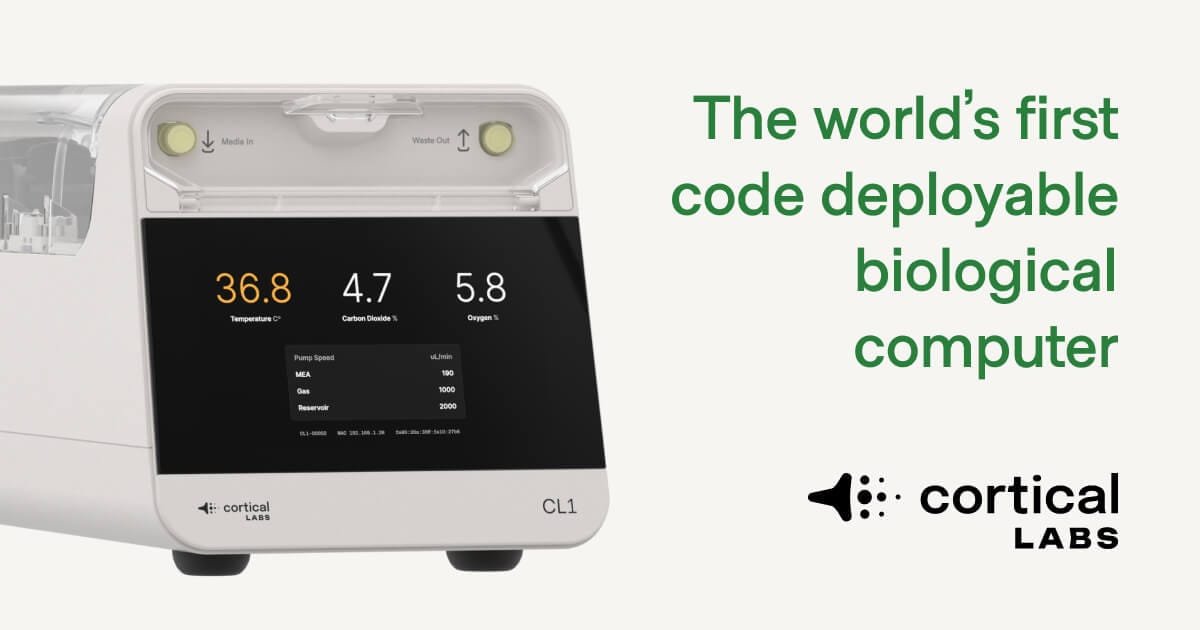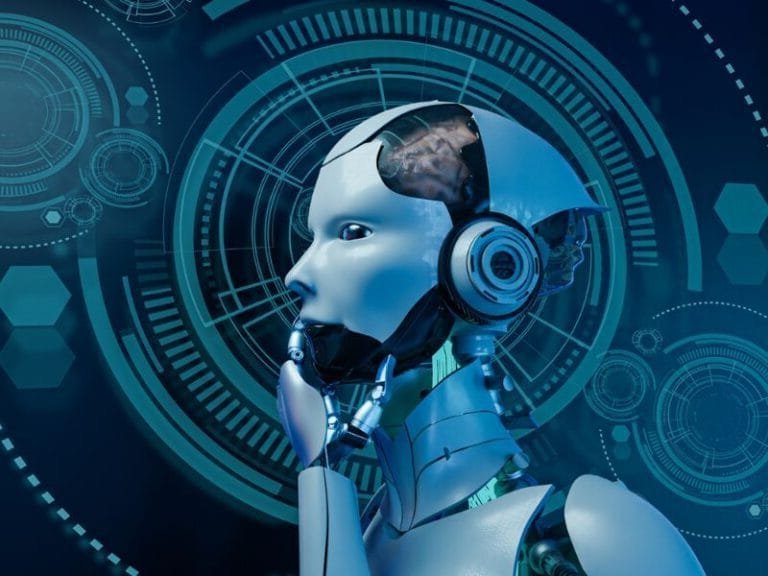Introduction to Biological Computing
In a groundbreaking development, the Australian startup Cortical Labs has introduced the CL1, the world’s first commercial biological computer powered by human brain cells. This innovative device, unveiled at the Mobile World Congress in Barcelona, represents a significant advancement in the integration of biological intelligence with artificial intelligence (AI).
Merging Neurons with Silicon: The CL1 Architecture
The CL1 operates by cultivating lab-grown human neurons on a silicon chip, enabling bidirectional electrical communication. These neurons are sustained within a nutrient-rich solution, ensuring their viability for up to six months. This hybrid system allows for dynamic information processing, leveraging the adaptability of biological neurons to enhance computational efficiency.

The Biological Intelligence Operating System (biOS)
Central to the CL1’s functionality is Cortical Labs’ Biological Intelligence Operating System (biOS), which creates a simulated environment for the neurons. This system facilitates the deployment of code directly through the neural cultures, enabling the performance of complex computing tasks. The biOS effectively bridges the gap between biological processes and traditional computing, offering a platform for real-time learning and adaptation.
Energy Efficiency and Learning Capabilities
One of the most remarkable aspects of the CL1 is its energy efficiency. Biological neurons require significantly less energy compared to conventional silicon-based processors. Additionally, these neurons possess inherent learning capabilities, allowing them to adapt and process information in ways traditional computers cannot. An earlier iteration of this technology demonstrated the ability of a neural network to learn and play the video game Pong, showcasing the potential of biological computing systems to exhibit sentient-like behavior when embodied in simulated environments.

Ethical Considerations in Biological Computing
The integration of living neurons into computing systems raises important ethical questions regarding consciousness and sentience. Cortical Labs acknowledges these concerns and has implemented measures to address them, although specific details have not been extensively disclosed. The broader scientific community continues to engage in discussions to navigate the ethical implications of such advancements responsibly.
Commercial Availability and Future Prospects
Cortical Labs plans to make the CL1 available to customers starting in June, with each unit priced at approximately $35,000. The company envisions this technology as a democratizing force, providing researchers and innovators with access to biological computing without the need for specialized hardware and software. This accessibility could catalyze further innovations in AI, robotics, and computational biology, paving the way for more adaptive and efficient computing systems.
Conclusion: The Symbiosis of Biology and Technology
The advent of the CL1 signifies a pivotal moment in computing, where the lines between biological intelligence and artificial systems blur. By harnessing the power of human brain cells, Cortical Labs has opened new avenues for creating machines that learn and adapt with unprecedented efficiency. This fusion of biology and technology not only enhances our computational capabilities but also challenges our understanding of intelligence and the potential of AI.
Glossary
- Biological Computing: A field of study that uses biological materials and principles to perform computational functions.
- Neurons: Specialized cells in the nervous system that transmit information through electrical and chemical signals.
- Silicon Chip: A piece of silicon material used in electronics to fabricate integrated circuits.
- Biological Intelligence Operating System (biOS): Cortical Labs’ platform that enables interaction between biological neurons and computational tasks.
- Energy Efficiency: The ratio of useful output of a system to the energy input, highlighting the system’s ability to perform functions with minimal energy consumption.
- Sentience: The capacity to have subjective experiences and feelings.
- Ethical Considerations: The examination of moral principles and implications associated with a particular technology or practice.
- Computational Biology: An interdisciplinary field that applies data-analytical and theoretical methods to biological systems.




